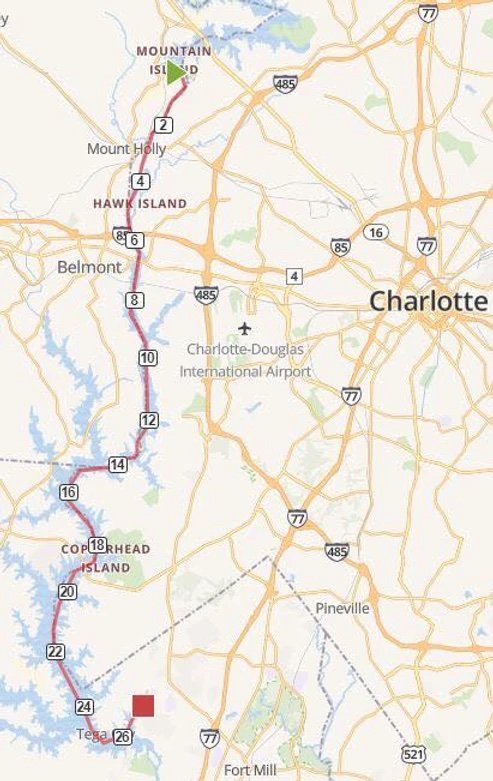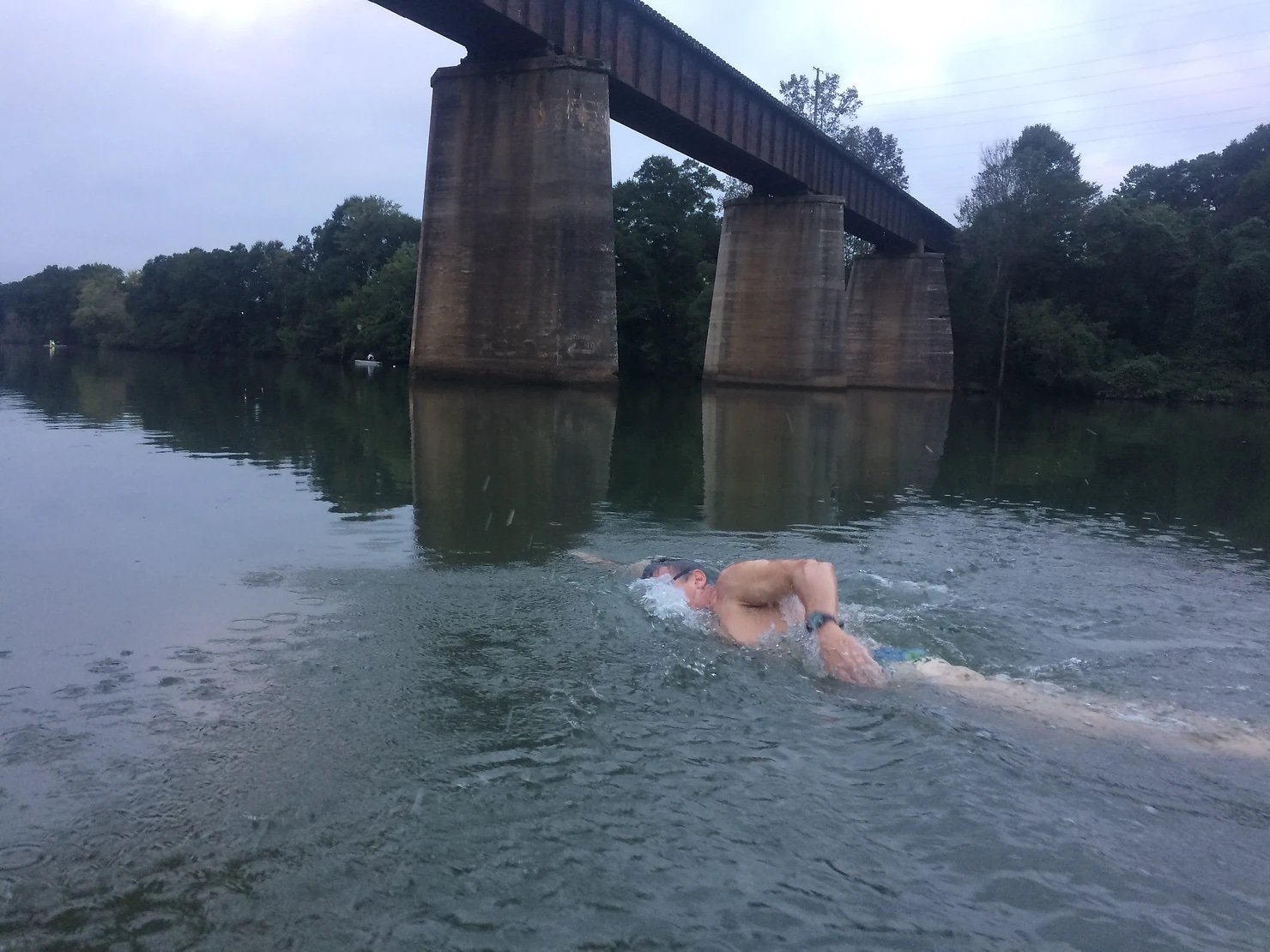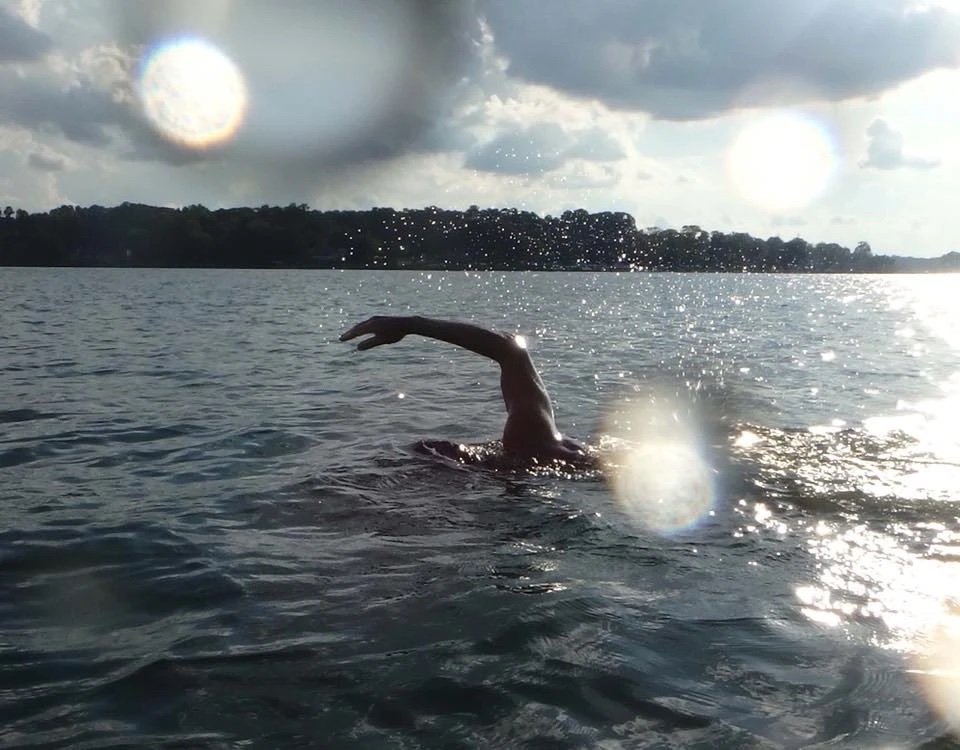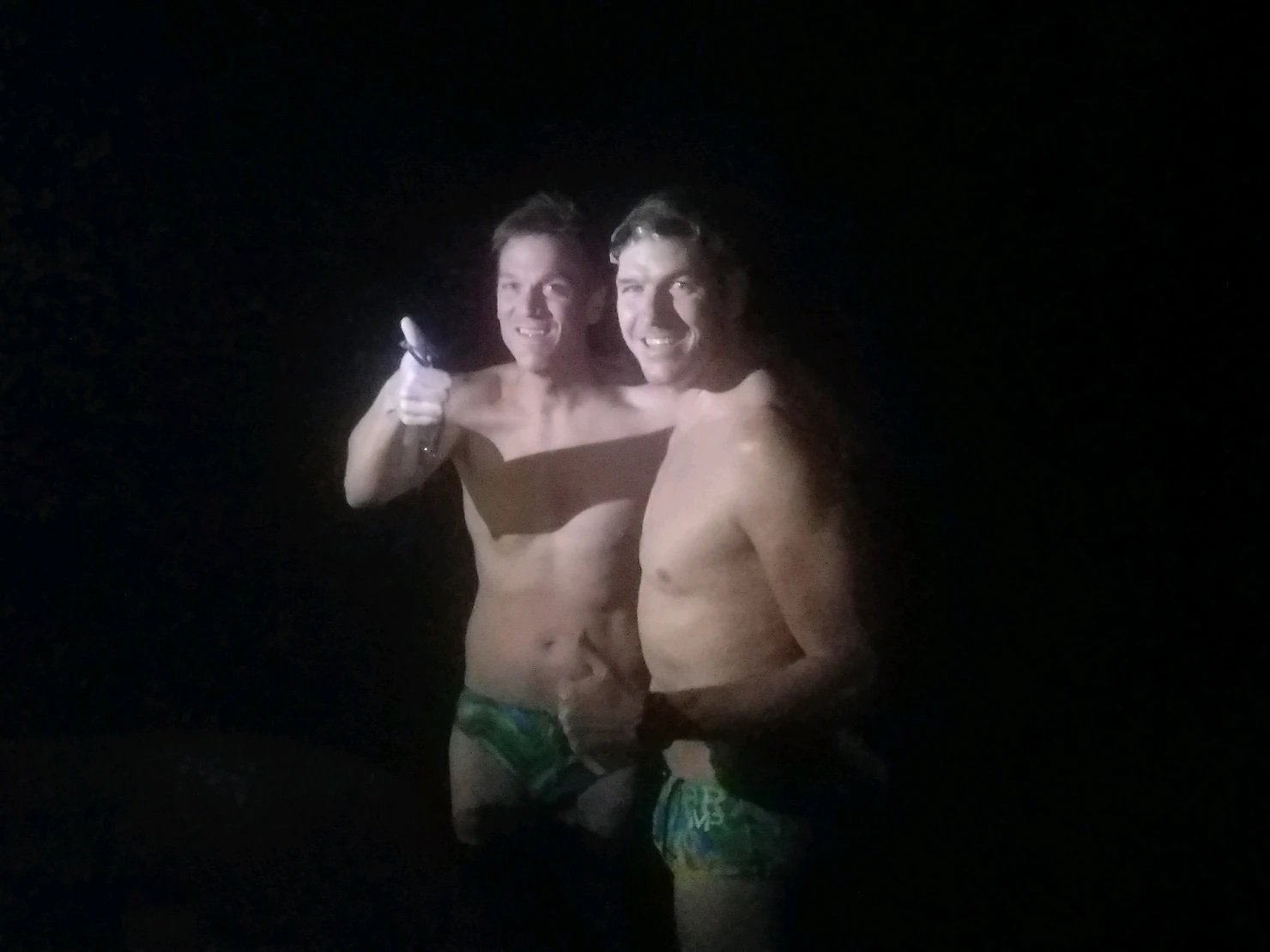‘Dam to dam’: Inside an epic swim
It all begins with an idea. Maybe you want to launch a business. Maybe you want to turn a hobby into something more. Or maybe you have a creative project to share with the world. Whatever it is, the way you tell your story online can make all the difference.
Don’t worry about sounding professional. Sound like you. There are over 1.5 billion websites out there, but your story is what’s going to separate this one from the rest. If you read the words back and don’t hear your own voice in your head, that’s a good sign you still have more work to do.
Be clear, be confident and don’t overthink it. The beauty of your story is that it’s going to continue to evolve and your site can evolve with it. Your goal should be to make it feel right for right now. Later will take care of itself. It always does.
That represented the entire length of Lake Wylie, a distance of 28 miles. My friend Michael Guzek thought of the idea, and once we made a pact to try it, we referred to the swim from that point on simply as “dam to dam.”
There are other “dam to dam” segments of the Catawba River. But among the river chain’s 11 lakes, Lake Wylie is the oldest. Wylie, dammed in 1904, initially served one purpose: to generate electricity. It still does. Today it also cools power plants along its banks.
As we glided through those waters, ours was “the tale of two swims,” as Mike would later put it.
For the first portion, swimming was easy and smooth. In flat water, freestyle is predictable and connected. Our intense training made those miles almost effortless.
Then came the big water.
As the river widened, from the width of a highway to the width of a mile, the swells and chop increased.
Boat traffic made it even worse. In those conditions, swimming is difficult due to the unpredictable cross currents.
For 13 hours and beyond, the Catawba became our test. We swam from before sunrise into darkness.
And somehow, we made it.
We made it!
It was without a doubt the most difficult thing I’ve ever done.
So here are the questions I was asked the most:
What did you think about?
My stroke. Songs. Navigation. My stroke. The euphoria I imagined I would feel when I finished. How miserable it would be to tell everyone I failed. Again, my stroke. Is my back seizing up? Swimmers I’ve known. Will this ever end?
In marathon swimming, you’d better be comfortable spending a lot of time with yourself.
What did you eat?
Carbohydrate, sugar and protein powders mixed with water in drink-sized bottles. There is an entire industry built around these concoctions for endurance athletes. I also threw in energy gels (salt, sugar, caffeine, carbs) and a granola bar. Also, plain water.
Mainly, this is where I need to thank the five kayakers who accompanied me. They paddled alongside and handed me what I needed every 30 minutes.
What’s next? The English Channel?
Right now, no. There’s a ton I don’t know about the Channel, but water temperature would be a challenge. Wylie was 80 degrees and I was approaching hypothermia by the end. Channel temps range from the 50s to mid 60s.
Mike and I are talking about swimming the entire Catawba River in sections, like hikers on the Appalachian Trail.
Did you get sick from the water?
No. It’s far from clear, but I’ve been swimming in the waters of Lake Wylie for years and I’ve never gotten sick. Charlotte’s drinking water source is upstream in Mountain Island Lake.
Mike and I conducted the bulk of our training at the Mecklenburg County Aquatic Center, Charlotte’s public swimming facility. It’s a well-maintained, excellent pool. Fascinating people train there.
After a big swim, the letdown can be difficult. My plan was to keep going to the pool every morning after our swim, but with an easy workload. I decompressed. I let my body and mind recover with minimal, easy swims.
Here’s the real question: Why did we do it?
I keep landing on these points:
Don’t let others define your limits. And don’t put limits on yourself. I used to think the first part was the toughest. The second part may be the biggest challenge.
This life ain’t no dress rehearsal. The camera is rolling. Start living.
An athlete without a race on the calendar is a ship without a rudder. For months, we had focus and a goal. The week prior was a flurry of nerves and preparation. If there had been no swim? It would’ve been just another week.
Most of all, I picture the moment when we stepped into the water before sunrise. Mist hung over the surface like a curtain. A splashing fish broke the silence. There we stood, full of wonder. Who knew what the day would bring?






